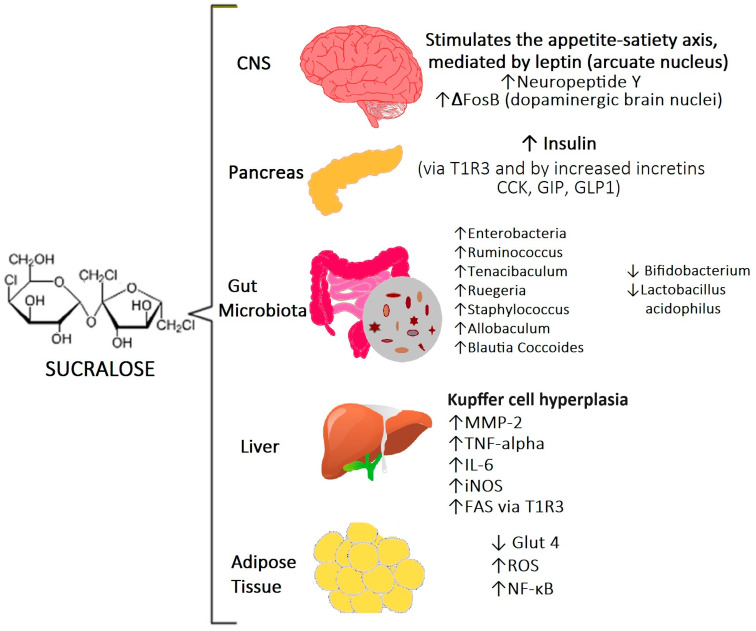Figure 2.
In the CNS, sucralose is reported to potentially interfere with the appetite–satiety axis, while also increasing the expression of neuropeptide Y and ΔFosB. Within the pancreas, sucralose is implicated in elevating insulin levels—mediated through the T1R3 receptor—and the augmentation of incretin secretion. Studies involving both animal models and humans suggest that sucralose consumption disrupts the intestinal microbiota. Furthermore, in the liver, sucralose is associated with an upregulation of the lipogenic pathway via FAS and the T1R3 receptor. In adipose tissue, it downregulates Glut 4 levels, increases ROS, and activates the NF-κB inflammatory pathway. Abbreviations: T1R3, taste receptor type 1 member 3; CCK, cholecystokinin; GIP, gastric inhibitory polypeptide; GLP1, glucagon-like peptide 1; MMP-2, matrix metalloproteinase-2; iNOS, nitric oxide synthases; FAS, fatty acid synthase; ROS, reactive oxygen species; NF-κB, nuclear factor kappa-light-chain-enhancer of activated B cells; CNS, central nervous system.

